Choosing the right motor for your RC drift car is crucial for achieving the desired performance and driving feel.
This also will either change the way you drive or you’ll want to find something that’s more suited to you.
It's a balance between speed, control, and personal preference.
So let’s jump right into learning about what some of these big words mean when it comes to the electrical spinny thing that makes your car move.
RC Drift Motor Glossary:
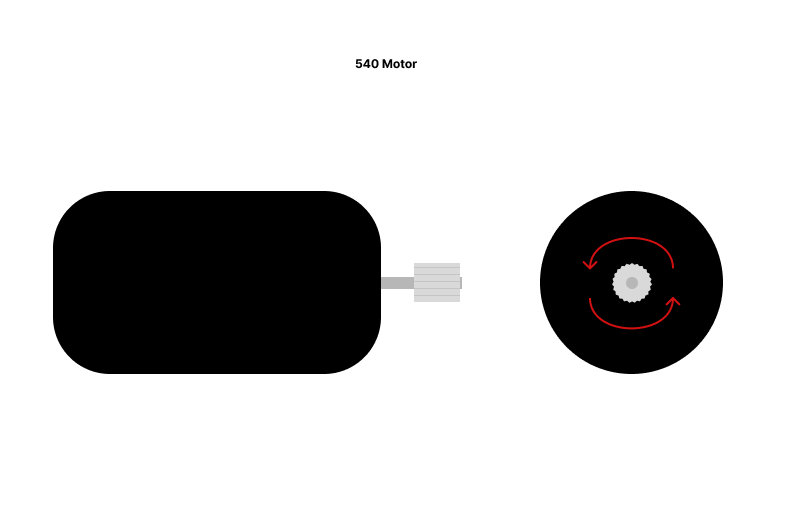
Use the below glossary and definitions to help you understand these motors specifications.
Often these will be listed on product listings on hobby stores or drifters down at the track will let you know what they’re running.
So it’s good to know.
Turns (T): This dictates the number of wire windings in the motor.
- Lower turns = higher RPM (speed), less torque.
- Higher turns = lower RPM, more torque (control).
Kilovolts (KV) Rating: This indicates the motor's RPM per volt.
Revolutions Per Minute (RPM):
Sensored vs. Sensorless:
Sensored: Provides smoother throttle response and better low-speed control, which is technically essential for precise drifting. They’re also preferred for competitive drifting.
Sensorless: Generally we wouldn’t recommend you going sensorless with your electronics as you’d lose out on crucial information if something was to go wrong and you don’t have full control over the tuning.
Voltage (V or Volts):
Load:
How hard the motor works.
Weight, grip, gearing all add load.
Temperature:
540 Motor (Size):
General Trends:
Lower turn motors (e.g., 7T) have higher KV and RPM.
Higher turn motors (e.g., 21.5T) have lower KV and RPM.
Now the above is a lot of information to consume at once, we recommend bookmarking the page so you can come back to it at anytime. We’ll get into the recommended motors for RC Drifting below.
Motor Recommendations and Considerations:
For Beginners: These motors are a very popular choice for a wide range of track surfaces and experience levels which makes them great to start with and even great for competitions.
- 21.5T motors are the base of entry level motors.
- 13.5T motors strike a good balance between speed and control.
For Experienced Drivers: The below are for the more seasoned or professional drivers who have an aggressive driving style and need speed on high grip surfaces.
10.5T motors provide higher RPM for faster drift transitions.
7T motors are for very high skill drivers, and very high traction surfaces.
The Table of RC Drift Motors
One thing we want you to note KV and RPM can vary significantly between different motor manufacturers.
Even within the same turn rating, different motor designs will yield different results.
Here's a table with general ranges. Keep in mind that these are approximations:
| Turns | Approximate KV | General RPM Range (at 7.4V) |
|---|
| 7T | 4500-5500kv | 33,000-40,000 |
| 10.5T | 3500-4000kv | 25,000-30,000 |
| 13.5T | 3000-3300kv | 22,000-24,000 |
| 17.5T | 2200-2600kv | 16,000-19,000 |
| 21.5T | 1600-2000kv | 11,000-14,000 |
Brand Considerations:
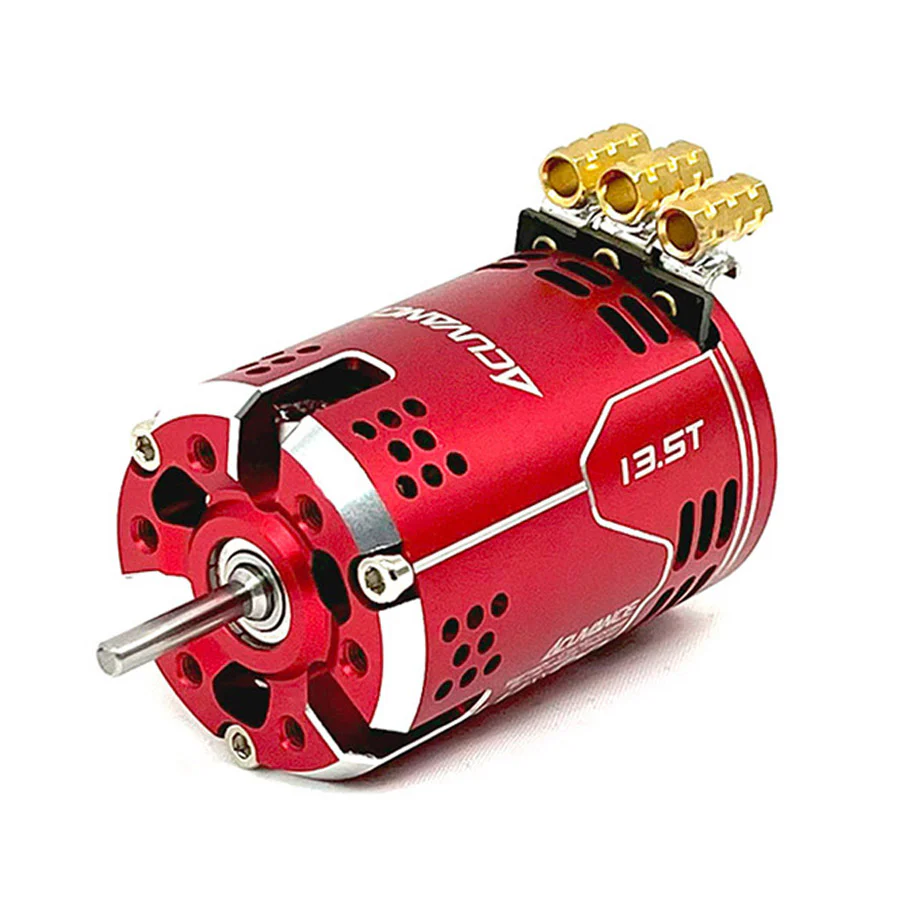
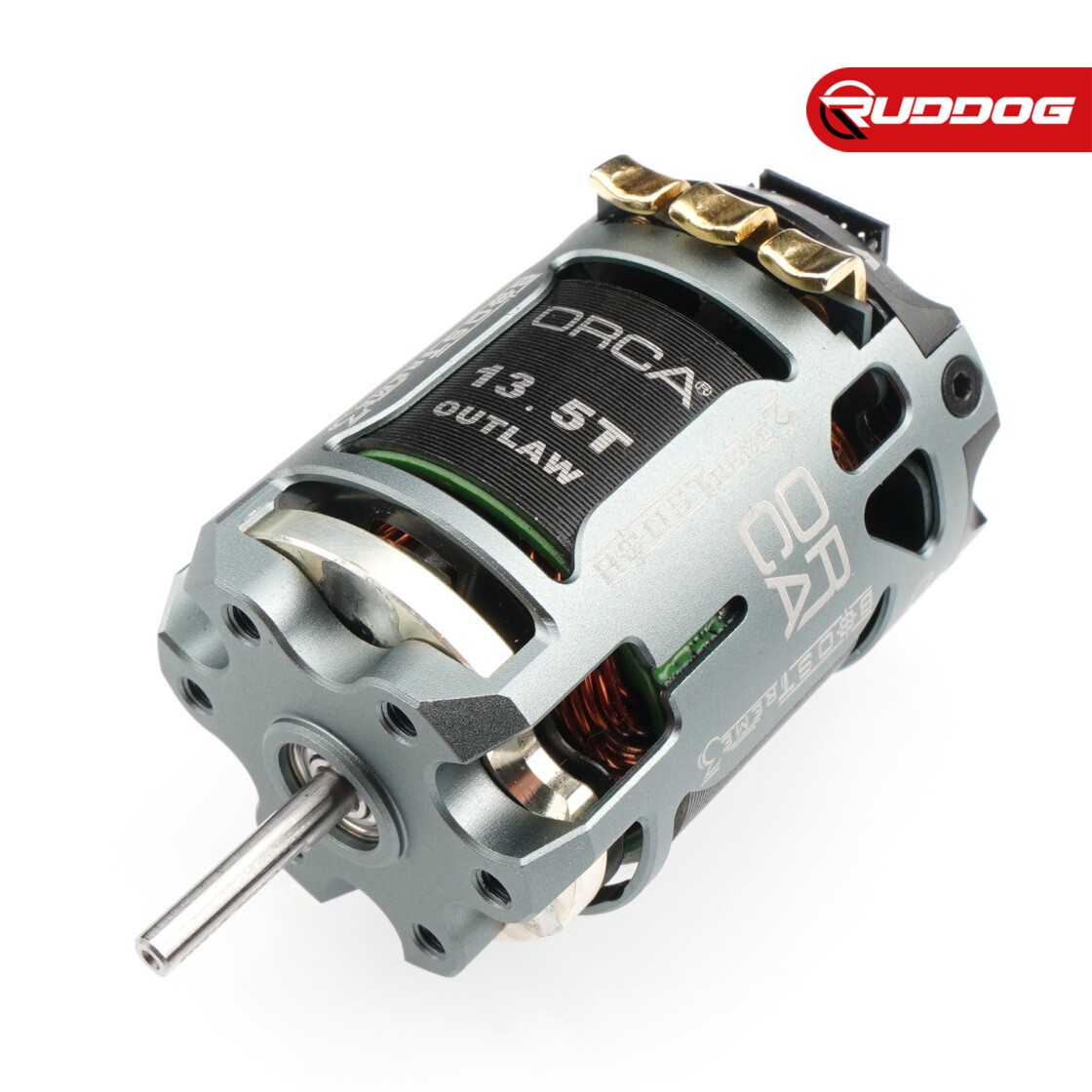
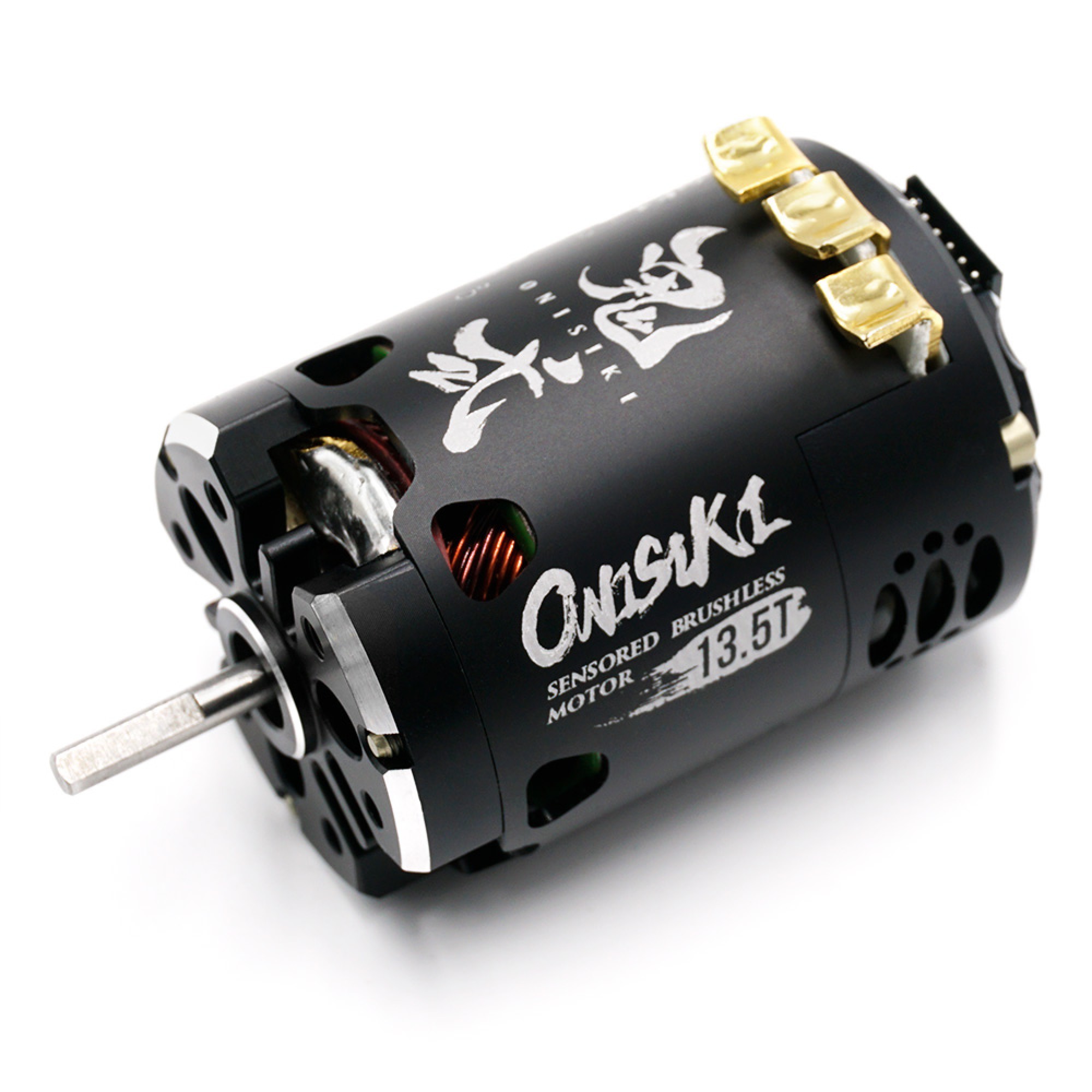
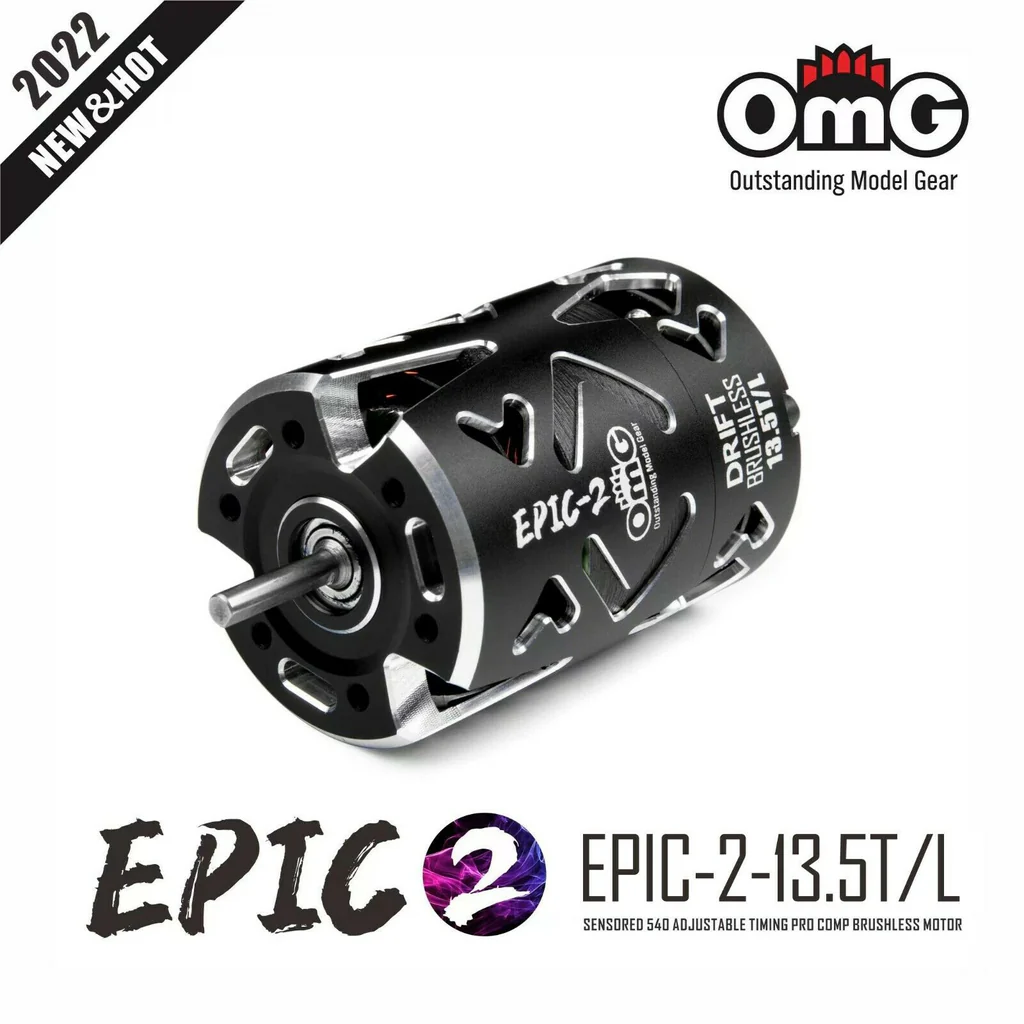
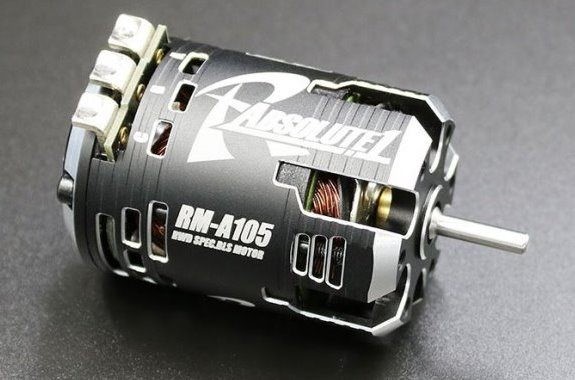

Control Your Motor, Control Your Car
RC drifting is about control, so higher turns (13.5, 21.5) are often preferred for smoother, more precise drifts.
The ideal motor depends on the track layout, your driving style, and the grip level of your tires.
It is very important to make sure that your Electronic speed controller (ESC) is rated for the motor you are using. Especially with the lower turn motors.
When looking at motors, always look at the manufactures specification sheets, for the most accurate information.
Understanding the Surfaces:
Polished Concrete:
- Very smooth and often very low grip.
- Can be inconsistent, as the level of polish varies.
- Requires precise throttle control.
Vinyl (P-Tile):
Epoxy Surfaces:
Motor Selection and Surface Interaction:
Here's how different motor turns generally respond on these surfaces:
21.5T Motors:
Performance:
- Excellent for these low-grip surfaces.
- Smooth, controllable power delivery allows for precise drifts.
- The lower RPM reduces the risk of excessive wheel spin.
Surface Response:
On polished concrete, ceramic, and epoxy, the 21.5T allows for very controlled slides, minimizing the risk of spinning out or "oversteer".
This motor excels at maintaining consistent drift angles.
Why it works:
- These surfaces require very smooth power delivery, to avoid over powering the low traction.
17.5T Motors:
Performance:
- A good balance of control and slightly increased speed.
- Still manageable on low-grip surfaces, but requires more throttle discipline.
Surface Response:
- On these surfaces, the 17.5T can provide slightly faster transitions, but requires careful throttle management to avoid excessive wheel spin.
- Can be a good choice for drivers with some experience.
Why it works:
- Provides a little more speed, but still allows for good control.
13.5T Motors:
Performance:
- Starts to become more challenging on very low-grip surfaces.
- Requires very precise throttle control.
- Can be used, but tire choice and car set up become much more important.
Surface Response:
On polished concrete, ceramic, and slick epoxy, the 13.5T can easily cause wheel spin and loss of control.
This motor is better suited for surfaces with slightly more grip.
Why it works:
- This motor starts to generate more wheel speed, that can be hard to control on very slick surfaces.
10.5T and Lower Turn Motors:
Performance:
- Generally not recommended for very low-grip surfaces.
- Too much power and wheel speed make them very difficult to control.
- These motors are more suited for high grip surfaces like tarmac.
Surface Response:
- On polished concrete, ceramic, and epoxy, these motors will result in excessive wheel spin.
- Use on high grip surfaces with softer tyres.
Key Considerations:
To achieve that peak performance we're all looking for in RC drifting, below are some key considerations.
Understanding these elements will not only grant you style points, but increase your drifting skills and ensure your car performs optimally.
1. Balanced Weight Distribution: The Foundation of Control
Achieving a balanced weight distribution is critical for stability and responsiveness. Strategic placement of components like the battery, motor, and ESC optimizes the center of gravity, preventing oversteer or understeer. This ensures predictable handling during transitions and sustained slides. Optimizing weight distribution is essential for consistent, controlled slides and adapting to various track surfaces.
2. Precise Throttle Control: The Key to Fluid Drifts
Mastering throttle modulation allows for fine adjustments to speed and traction, preventing excessive wheel spin and maintaining controlled slides. Effective throttle management is crucial for initiating and sustaining drifts, seamlessly transitioning between angles. A powerful motor demands precise throttle control, highlighting its importance in achieving fluid and stylish drifts.
3. Gyro Tuning: Stability and Spin Recovery
The gyro provides crucial stabilization, preventing spinouts and maintaining controlled drifts. It counteracts unwanted yaw, smoothing the car's trajectory, especially with high-powered motors and low-grip surfaces. Proper gyro sensitivity tuning is essential for natural feel and stability. A well-tuned gyro allows drivers to push limits with confidence, executing precise drifts.
4. Tire Selection: Matching Grip to Motor and Surface
Matching tire choice to motor power and track surface is vital. High-torque motors require controlled grip tires, while high-RPM motors need durable tires for consistent sliding. Hard plastic tires excel on smooth surfaces, while softer compounds offer increased grip on rougher tracks. Careful tire selection optimizes drift performance and control.
5. Motor Setup: Power and Precision
The motor's power and torque characteristics significantly impact drift performance. High-performance motors, like Acuvance, Hobbywing, Yokomo, Overdose, OMG, require precise tuning and matching with other components. Understanding motor capabilities ensures optimal power delivery and control during drifts.
Get out there and start sliding!
Basically, you've learned that your motor isn't just about going fast. It's about how you control your car when you're sliding. Think of it like this: you need to understand a few things to make the best choice.
When you're looking at motors, whether it's from awesome brands like Overdose or Hobbywing, you'll see words like "torque," "RPM," and "size." These aren't just fancy words – they tell you how the motor will actually feel when you're drifting.
Here’s the key: getting the perfect motor is like putting together a puzzle. It needs to fit perfectly with your tires, your gyro (that little helper that keeps you from spinning out), and how your car's weight is balanced. When you get this right, you'll have amazing throttle control, you'll be able to hold those drifts perfectly, and your car will just feel amazing.
So, don't just grab the first motor you see. Take a little time to understand what those numbers mean and how they work with the rest of your setup. This will really help you to drift smoother, look cooler, and have way more fun.
We hope this beginner's guide has helped you out! We'll catch you in the next guide with more tips and tricks to make your RC drifting even better.